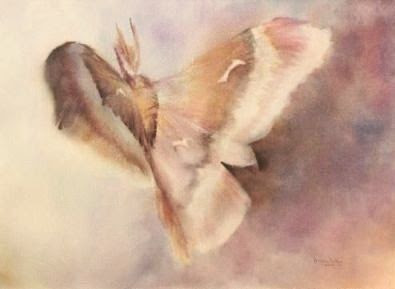Of all the visual elements we work with, value seems the most challenging, especially when an image is white. Let's take a look at that.
What happens to us is that we allow our thoughts to be about what the image is rather than what we see within it. For example, when we look at a white horse do we see a white horse or variations of values? If we look for values with intention and without thinking "white horse", chances are we will be surprised at just how dark shadows on a white horse can be.
 |
White horse seen as a white horse
 |
White horse seen with not thinking "white horse", rather thinking variations of values
There's an easy way to get this value relationship right: learn to ask yourself, "What's in shadow?" Shadows, no matter the color onto which they are cast, range from shallow to deep. If we practice seeing them this way, we can force ourselves to make our colors dark enough to indicate what kind of shadow we're observing.
Here's an analysis of the deep and shallow shadows I see in this photo of a white horse.






